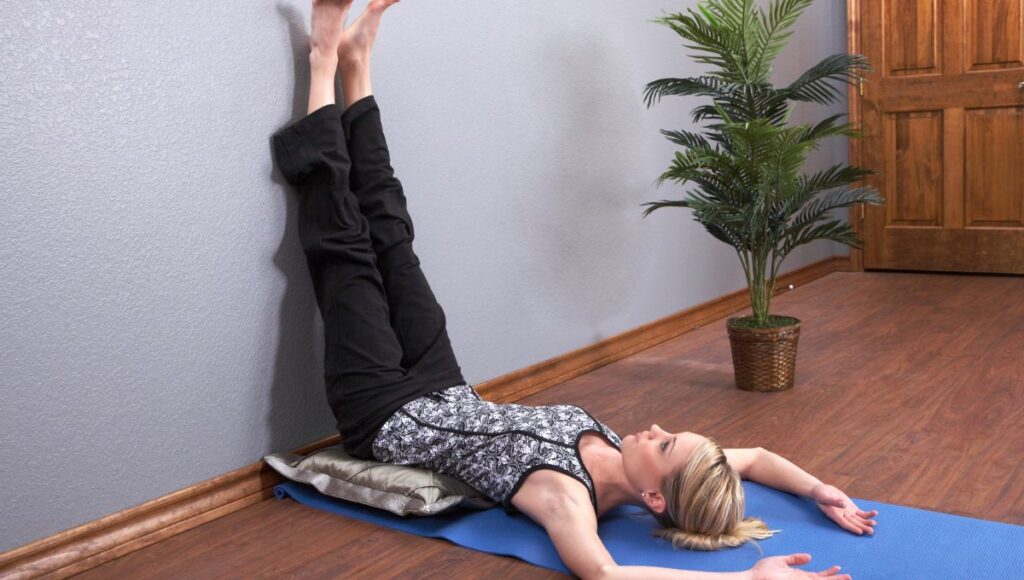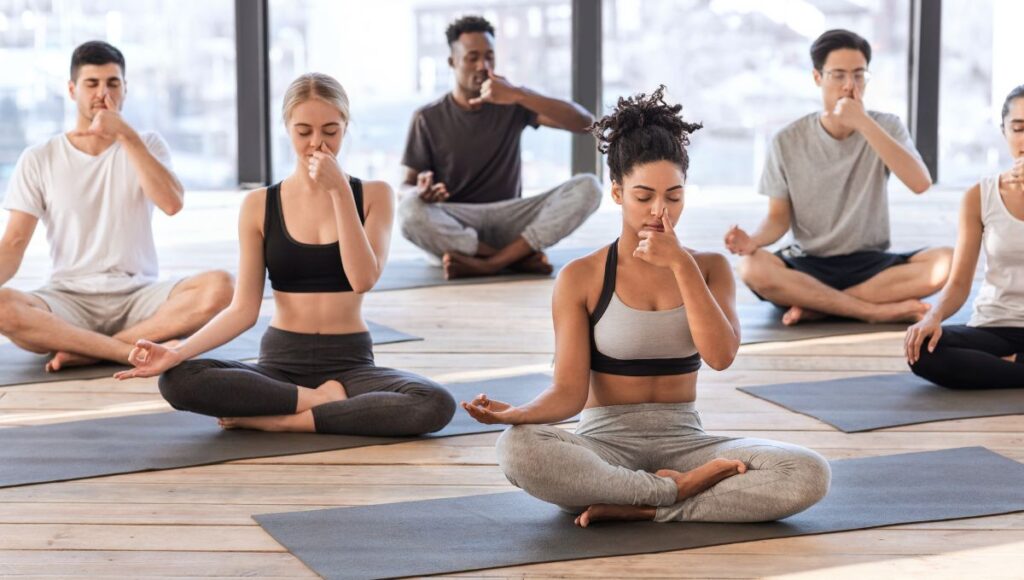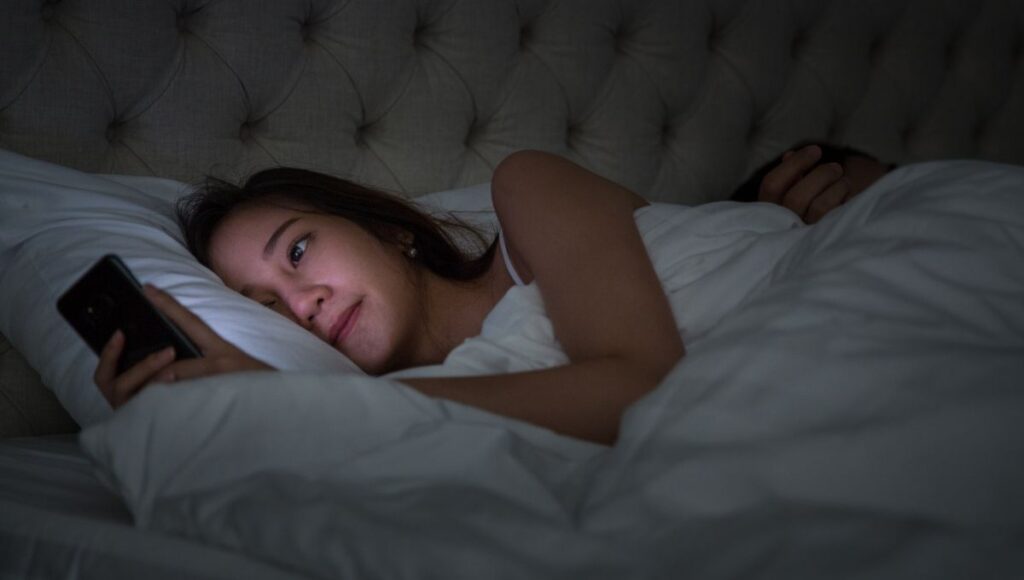
Yoga For Better Sleep: 12 Best Practices & Tips To Get Better Rest
Do you find yourself tossing and turning at night, desperately trying to catch some shut-eye?
If so, you’re not alone. Many people struggle with getting a restful night’s sleep, leaving them feeling groggy and drained the next day.
Luckily for us, there is a natural solution that can help you drift off – yoga! With many of our minds constantly racing with worries and thoughts that make it difficult to unwind when it’s time for bed, practicing yoga helps calm the nervous system and promotes relaxation by combining gentle movements with conscious breathing.
In the next sections, we will explore how meditation and pranayama – the art of breath control – can further enhance your sleep quality. But before we get there, grab your yoga mat, find a cozy spot in your home, and let’s embark on this journey towards better sleep together!
We’ll look at:
- How does yoga help with sleep?
- Asana for sleep
- Meditation for sleep
- Pranayama for sleep
- Lifestyle hacks for sleep
How does yoga help with sleep?
Yoga has been hailed as a natural remedy for many ailments, and its benefits extend to improving sleep quality as well.
Firstly, practicing yoga activates the relaxation response in our bodies. During a yoga session, we engage in slow and controlled movements, allowing our muscles to release tension and promote a sense of calmness. This helps to reduce stress hormones like cortisol which can disrupt sleep patterns.

For me, even just a 10 minute practice before bed makes the world of difference!
Additionally, the deep breathing techniques used in yoga stimulate the parasympathetic nervous system, which is responsible for inducing relaxation and preparing us for restful slumber.
Secondly, regular yoga practice improves our overall physical fitness. When we engage in physical activity through yoga poses (asanas), we build strength and endurance while also increasing flexibility.
This physical exertion not only helps us burn excess energy but also regulates blood flow throughout the body. By enhancing circulation and oxygenation of tissues, yoga aids in promoting bodily functions that are crucial for achieving deep sleep.
Yoga also supports better sleep by developing our mind-body connection. It encourages mindfulness and body awareness through meditation and conscious awareness of each movement and breath.
By focusing our attention on the present moment during yoga practice, we learn to let go of racing thoughts and worries that often keep us awake at night. This mental discipline allows us to cultivate a peaceful mindset before bedtime, paving the way for uninterrupted slumber.
Asana for sleep
When it comes to improving your sleep, incorporating specific yoga asanas (poses) into your routine can work wonders. These asanas help relax the body and calm the mind. Let’s explore a few powerful poses that promote deep, rejuvenating sleep.
1. Balasana (Child’s Pose)
A gentle and comforting pose, Balasana is often referred to as the ultimate relaxation pose in yoga.
To practice this pose, kneel on the floor with your knees slightly wider than hip-width apart. Lower your torso forward, resting it between your thighs.
Extend your arms in front of you or alongside your body with palms facing up (I prefer to have my palms facing this way in the evening as I find it more relaxing). Close your eyes and breathe deeply as you surrender into the pose.
Balasana helps release tension in the back, shoulders, and neck while calming the mind and relieving stress – perfect for unwinding before bedtime.
2. Viparita Karani (Legs-Up-The-Wall Pose)
This restorative inversion is excellent for promoting relaxation and easing insomnia symptoms.

Begin by sitting sideways against a wall with one hip touching it. Lie down on your back while simultaneously swinging your legs up along the wall until they are straight up in the air.
Rest your arms comfortably by your sides or place them on your belly.
Viparita Karani reduces anxiety, slows down heart rate, and stimulates blood circulation towards the upper body – all helpful factors when preparing for a peaceful night’s sleep.
3. Supta Baddha Konasana (Reclining Bound Angle Pose)
This soothing reclined posture gently stretches the inner thighs and hips while opening up the chest and relieving tension from these areas – all crucial for releasing physical discomfort that may disrupt sleep quality.
Lie flat on your back with knees bent and feet together so that they touch.
Slowly let your knees fall open to the sides, allowing the soles of your feet to meet. Place your hands on your belly or let them rest by your sides, palms facing up.
Close your eyes and relax into this deeply calming pose, focusing on slow, rhythmic breathing. Incorporating these asanas into your evening routine can help create a gentle transition from the busyness of the day to a peaceful state of mind conducive to sleep.
4. Uttanasana (Forward Fold)
Forward folds, like Uttanasana, calm the nervous system and help release tension in the back and hamstrings. The gentle inversion also has a soothing effect on the brain.
Stand with feet hip-width apart, hinge at your hips, and fold forward, reaching for your shins, ankles, or the floor.
Keep your spine long and let your head hang. Breathe deeply and relax into the stretch.
5. Supta Matsyendrasana (Supine Spinal Twist)
This twist helps release tension in the spine and lower back, promoting relaxation. For me, I find twists are one of the best ways to release any built-up stress or negative energy.
Lie on your back, hug your knees into your chest, and then drop them to one side while extending your opposite arm out to the side.
Turn your head to look in the opposite direction. Hold the stretch and then switch sides.
6. Setu Bandha Sarvangasana (Supported Bridge Pose)
Using props to support the hips in Bridge Pose helps open the chest and stretch the spine. This gentle backbend can alleviate fatigue and calm the mind.
Lie on your back, bend your knees, and place your feet hip-width apart. Lift your hips towards the ceiling.
Slide a prop (like a block or cushion) under your sacrum for support. Relax your arms by your sides.
Remember to approach each pose with patience and listen to your body’s limits, making adjustments as necessary.

Meditation for sleep
Meditation for sleep is a powerful practice that can help calm the mind, relax the body, and prepare you for a restful night’s sleep. When it comes to better sleep, meditation offers an array of techniques and approaches that can be tailored to your individual needs.
One popular method is mindfulness meditation, which involves focusing your attention on the present moment without judgment or attachment.
- To begin a meditation practice for better sleep, find a quiet and comfortable space where you won’t be disturbed.
- Sit in a relaxed position with your back straight but not rigid, allowing your body to settle into a comfortable posture. Close your eyes gently and start by taking a few deep breaths to center yourself.
- Then, bring your attention to your breath, noticing the sensation of each inhale and exhale. As thoughts arise during meditation, simply acknowledge them without getting caught up in them.
- Imagine each thought as a passing cloud in the sky of your mind; observe it but let it drift away as you return your focus to your breath.
You can also use guided meditations specifically designed for better sleep.
These recordings often include soothing music or calming voice-overs that guide you into relaxation and help quieten racing thoughts.
Another technique within meditation for better sleep is progressive muscle relaxation (PMR).
This involves systematically tensing and releasing different muscle groups throughout the body while simultaneously focusing on deep breathing. Start with either the feet or hands and work slowly up or down through the entire body, paying attention to any areas of tension or discomfort and consciously releasing them.
By cultivating awareness of the present moment and gently letting go of racing thoughts or stressors from the day, you can create an environment conducive to rest.
Pranayama for sleep
Pranayama, or breath control, is an essential practice in yoga that can greatly aid in improving the quality of your sleep. By regulating and deepening your breath, you can calm the mind and create a sense of relaxation in the body, making it easier to drift off into a peaceful slumber.
Here are three pranayama techniques to incorporate into your bedtime routine
1. Nadi Shodhana (Alternate Nostril Breathing)
This pranayama technique is known for its balancing effect on the nervous system, helping to reduce stress and anxiety that can interfere with sleep.
To practice Nadi Shodhana, sit comfortably and bring your right hand up towards your face. Using your right thumb, close your right nostril and inhale deeply through your left nostril.
Pause briefly at the top of the inhalation, then close your left nostril with your ring finger and exhale through the right nostril.
Continue this pattern, alternating between inhaling through one nostril and exhaling through the other for several minutes.

2. Ujjayi Breath (Victorious Breath)
Ujjayi breath involves gently constricting the back of the throat to create an audible sound resembling ocean waves.
This technique helps slow down both the physical body and the mind, promoting relaxation and tranquility essential for better sleep.
Begin by sitting or lying down comfortably and take a deep inhalation through both nostrils while slightly contracting your throat muscles to produce an audible “ha” sound as if you were fogging up a mirror.
Exhale slowly with control while maintaining this constriction in the throat throughout each breath cycle.
3. Sitali Pranayama (Cooling Breath)
If you often find yourself feeling restless or overheated before bed, Sitali pranayama can be particularly beneficial as it has a cooling effect on both body and mind. Sit in a comfortable position and roll your tongue, creating a tube-like shape.
Inhale deeply through this rolled tongue, allowing the breath to cool your mouth and throat. If you can’t roll your tongue, I often teach this by having students place their bottom and top teeth together, and then breathe in cold air through the gaps.
Another way you could do it is by pursing your lips and inhaling deeply as if sipping in air through a straw
Close your mouth and exhale slowly through your nostrils. Exhale gently through the nose. Continue this process for several rounds, focusing on the cooling sensation with each inhalation.
Lifestyle hacks for sleep
Nighttime routine
Establishing a consistent bedtime routine is super important. Just like babies benefit from having a predictable bedtime routine, adults can also benefit greatly from this practice.
Start by setting aside at least 30 minutes before bed for winding down.
Incorporating relaxation techniques into your pre-sleep routine will help signal to your body that it’s time to wind down and prepare for restful sleep ahead. Engaging in activities like reading, taking a warm bath, or practicing gentle stretches allows your mind and body to relax, promoting deeper sleep.
On the flip side, avoiding stimulating activities and intense exercise close to bedtime can prevent heightened arousal that might hinder falling asleep. It’s crucial to be mindful of our screen usage before bed.

Limiting screen time before bed
The blue light emitted by electronic devices such as smartphones and tablets can interfere with melatonin production – the hormone responsible for regulating sleep-wake cycles. To ensure you get quality sleep, it’s essential to limit screen time before bedtime.
Try establishing a “digital curfew” where you avoid using electronics at least one hour prior to hitting the hay. Instead of scrolling through social media feeds or watching TV shows in bed, consider indulging in more calming activities that promote relaxation.
The bright blue light emitted by electronic devices can throw off our natural sleep-wake cycles by suppressing melatonin production. By implementing a digital curfew and minimizing screen time at least one hour before bed, we give our bodies the opportunity to produce melatonin naturally and regulate our sleep patterns.
Conclusion
Incorporating yoga into your bedtime routine can be a game-changer when it comes to improving the quality of your sleep.
Remember that each person’s journey towards better sleep is unique; it may take time to find what works best for you individually. Be patient with yourself as you explore different aspects of yoga for better sleep.
With persistence and an open mind, you will discover the profound benefits that lie within this ancient practice. Ultimately, by dedicating time to self-care through yoga before bed – whether it be through asanas, meditation, pranayama, or lifestyle adjustments – you are investing in the quality of your sleep and overall health.
So, unroll your yoga mat, dim the lights, and embark on a restful journey towards a rejuvenated mind and body.



Comments (3)
Adrenal Cocktails: What Are They, Do They Help With Adrenal Fatigue & 3 Recipes – Nourishing Self
November 10, 2023 at 11:25 am
[…] demands placed on them. Some common symptoms of adrenal fatigue include chronic fatigue, difficulty sleeping, brain fog, and low energy levels throughout the […]
Best 6 Day Workout Split: How To Break Up Your Workouts Across The Week – Nourishing Self
November 19, 2023 at 7:22 pm
[…] proper recovery strategies such as stretching exercises, foam rolling sessions, quality sleep, adequate hydration, and balanced nutrition are also key components in optimizing your results from […]
Sage For Cleansing: How To Burn Sage, Benefits, Rituals & Indigenous Roots – Nourishing Self
November 23, 2023 at 7:22 pm
[…] dedicated to healing or therapy, such as yoga studios, massage parlors, or counseling offices, greatly benefit from sage burning. It assists in […]
Comments are closed.